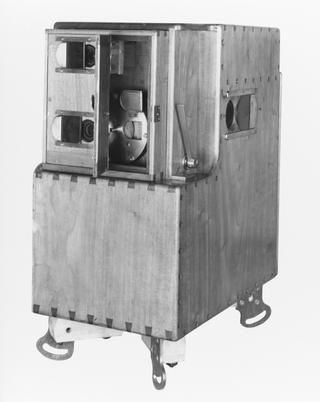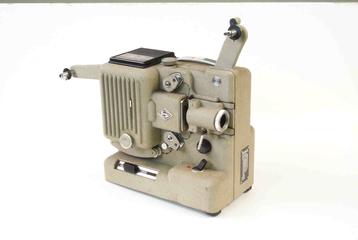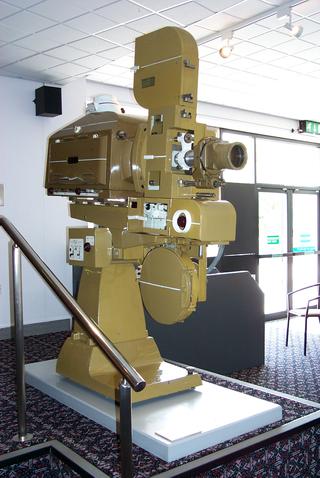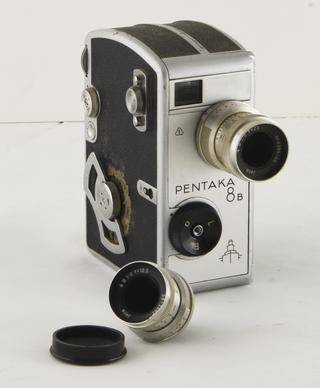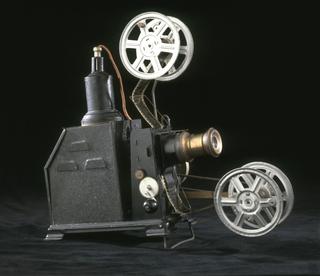
Biokam Camera Projector



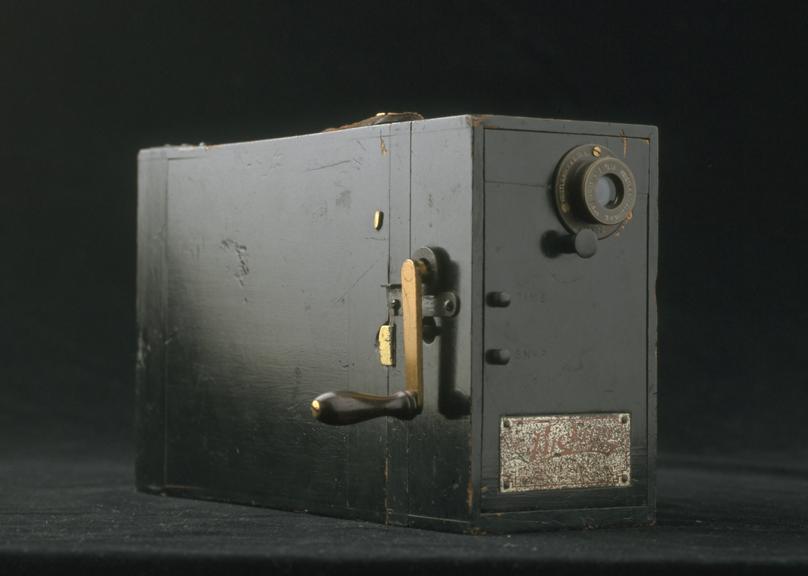
Mechanism box with claw pulldown for 17.5 centre perforated film. Voightlander Eurysco lens F:38mm f/7. Vewifinder missing, gate pressure plate detached. Single frame and 8 frame shafts, hand turned; provision for time exposure for stills. No 57. With detachable double film takeup box; provision for viewing image through film; two negative film chambers (sides need resoldering); one wooden printing box for negative and positive film; tin of 25' negative film; film roll support for projection; lengths of unexposed positive, developed negative and positive film (nitrate).
The Biokam combined camera and projector was manufactured England from 1899 onwards.
The mechanism was made by Alfred Darling in Brighton. One of the earliest amateur cine devices, the Biokam could be used as a movie or stills camera, projector, printer and enlarger. It used 17.5mm film with central perforations between frames (like the later 9.5mm film). Distributed by the Warwick Trading Company, the full outfit cost eleven guineas (£11.55).
Details
- Category:
- Cinematography
- Collection:
- Kodak Collection
- Object Number:
- 1990-5036/7224
- type:
- cine camera, printer and projector
- credit:
- The Kodak Collection at the National Media Museum, Bradford
